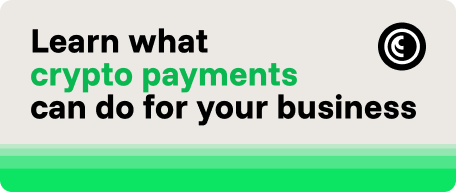Move-to-Earn: Making Money by Walking?

What is Move-To-Earn?

The concept of Move-to-Earn appeared in late 2021 thanks to Play-to-Earn games, which gained popularity during the сoronavirus pandemic. The M2E concept is that the user receives tokens as a reward when performing certain physical activities. For example, running, walking, working out, etc.
How Move-To-Earn Works

To earn tokens in M2E projects, you need to purchase or receive an NFT. These can be sneakers, avatars, or other objects in the virtual world, such as pets from the Genopets app that you have to take care of and walk with. An NFT is a kind of entrance ticket to the game. Non-fungible tokens are bought on marketplaces in the project’s app or are won in contests.
Here’s the general guide for M2E beginners:
- Download the app of the chosen project and open the crypto wallet in it.
- Transfer the necessary amount in cryptocurrency to this wallet to buy the NFT or get the prize token.
- Perform physical activities determined by the app and convert miles into the project’s utility token.
The apps’ wallets offer pairs to exchange the token for coins such as SOL or stablecoins like USDC, which can be withdrawn via exchanges for storage or exchanged for fiat.
Where the Money Comes From

A curious person thinking about participating in M2E projects will definitely have a question: how does the scheme to enrich both the app’s owners and participants work?
- First of all, the project is conceived, and the product is formed for presentation to a closed circle of venture capital funds. If the funds find the startup interesting, they sponsor it. These funds help provide the project with liquidity, which speeds up its market entry.
- The second round of fundraising is done through an IDO or ICO, that is, an initial offer to buy a token before its listing on exchanges. The money raised in the above ways is used to provide liquidity to the utility token so that people who entered the project first can exchange the earned tokens for other coins or stablecoins.
- Finally, the primary way to generate funds for the project’s continued existence is by attracting new users. Users buy sneakers, pets, and avatars, and the money from these sales provides liquidity to the utility coin.
Among the risks of such projects is that new users no longer join, which would lead to liquidity problems and the devaluation of utility tokens.
Not Everything Is as Good as Promised

ICB Fund investment analyst Aaron Chomsky believes that “Move-To-Earn projects are the most obvious pyramid schemes created to hoodwink gullible people.” He emphasizes that similar games that motivate people to move existed before the sensational project STEPN; for example, Pokemon GO. By contrast, decentralized genres offer rewards in the form of coins.
Aaron Chomsky thinks there are several risks in M2E projects: “Firstly, the rewards are calculated using a formula whose calculation can be changed by developers at any time. Of course, it’ll affect players’ revenues. Secondly, if the market as a whole falls, the project tokens will get cheaper. Third, perhaps the most crucial point is that a stable demand for tokens of such projects is impossible to maintain. Consequently, the main beneficiaries are early investors who can sell their tokens as their prices increase, while those who buy coins after their listing on exchanges may suffer serious losses.”
The analyst doesn’t consider Move-to-Earn to be crypto market innovations and thinks that nothing new has happened lately: “You can call it whatever you want, make up new fancy terms, but a generally accepted definition for this phenomenon was invented a long time ago — financial pyramid. Only those who have entered it first earn money, as in any other pyramid.”
What Users Think

Donin Lee, a crypto enthusiast from South Korea, shared his personal experience as a player. He has been using the STEPN app for the past two months and thinks that “the project is great for players. If you’re trying to make money, you need to enter such projects much earlier in order for them to pay off by the peak point when the price goes down.”
The crypto market collapse dragged STEPN tokens down with it as well. For now, Donin is taking a neutral stance and isn’t withdrawing tokens from the app, but is upgrading his sneakers and converting the steps passed into a GST utility coin. He hopes coin prices will rise soon and that “the developers have a plan to evolve the project in the long term, and that they use the market situation to clear a large supply of NFTs.”
Analysts believe that M2E projects are just a facade for a pyramid scheme. Project participants are actively hiking, walking their pets, exercising, and ultimately hope for token growth. One way or another, the projects are on everyone’s radar, and time will show how this part of the crypto world will develop. To understand the topic more deeply and learn how projects of this concept function from the inside, we will be creating a review of the most popular games in this area in the next article.











